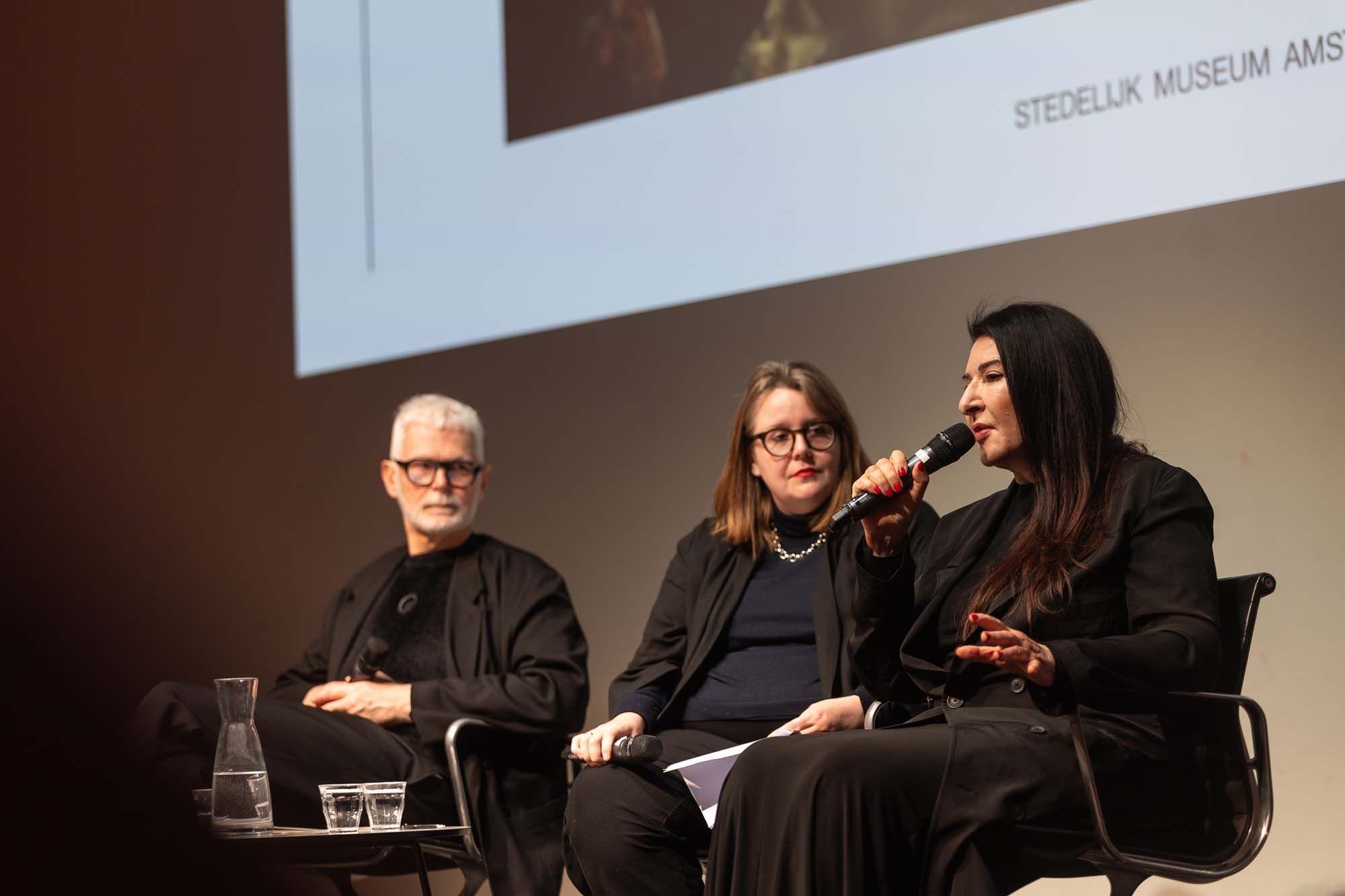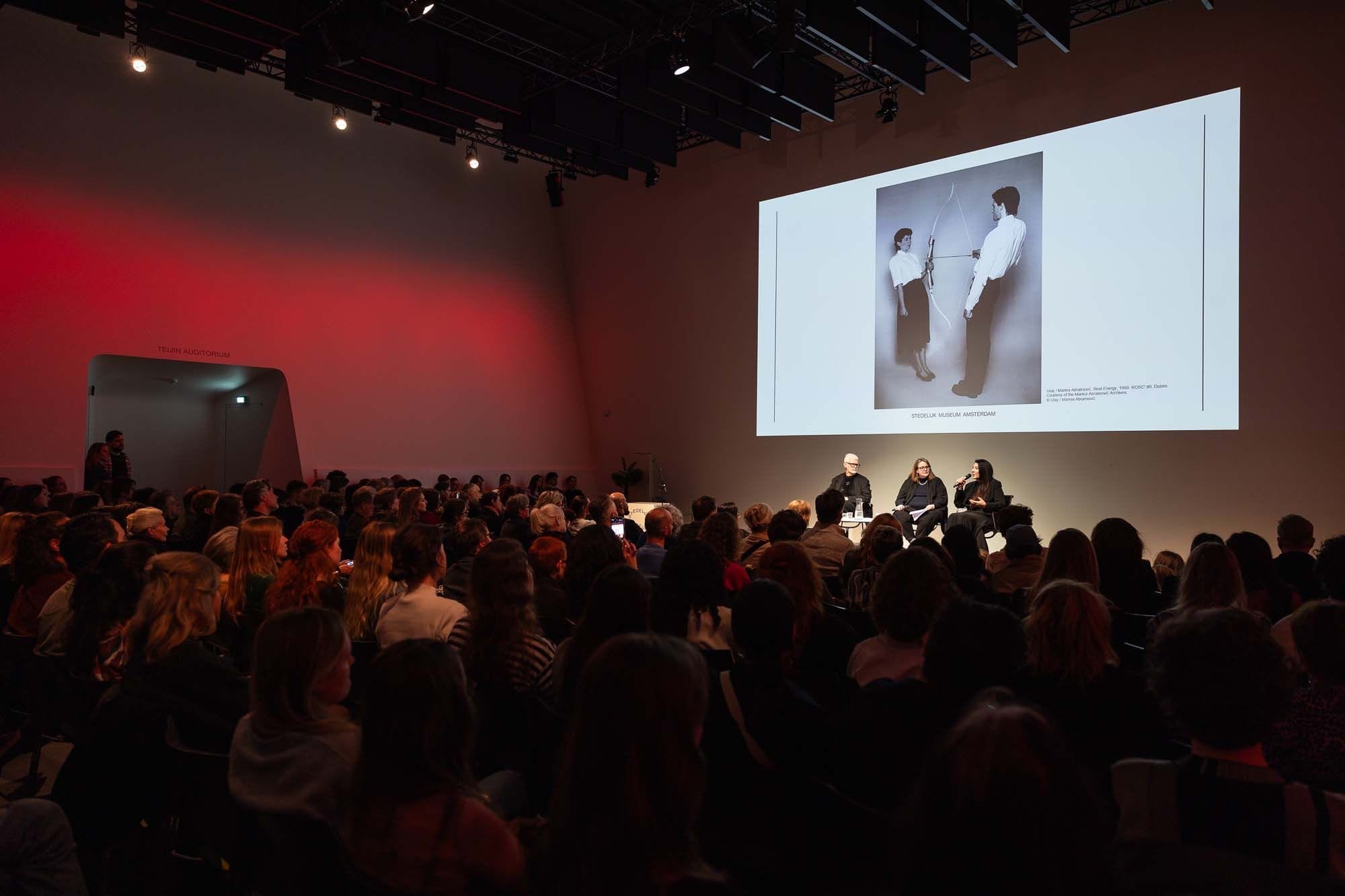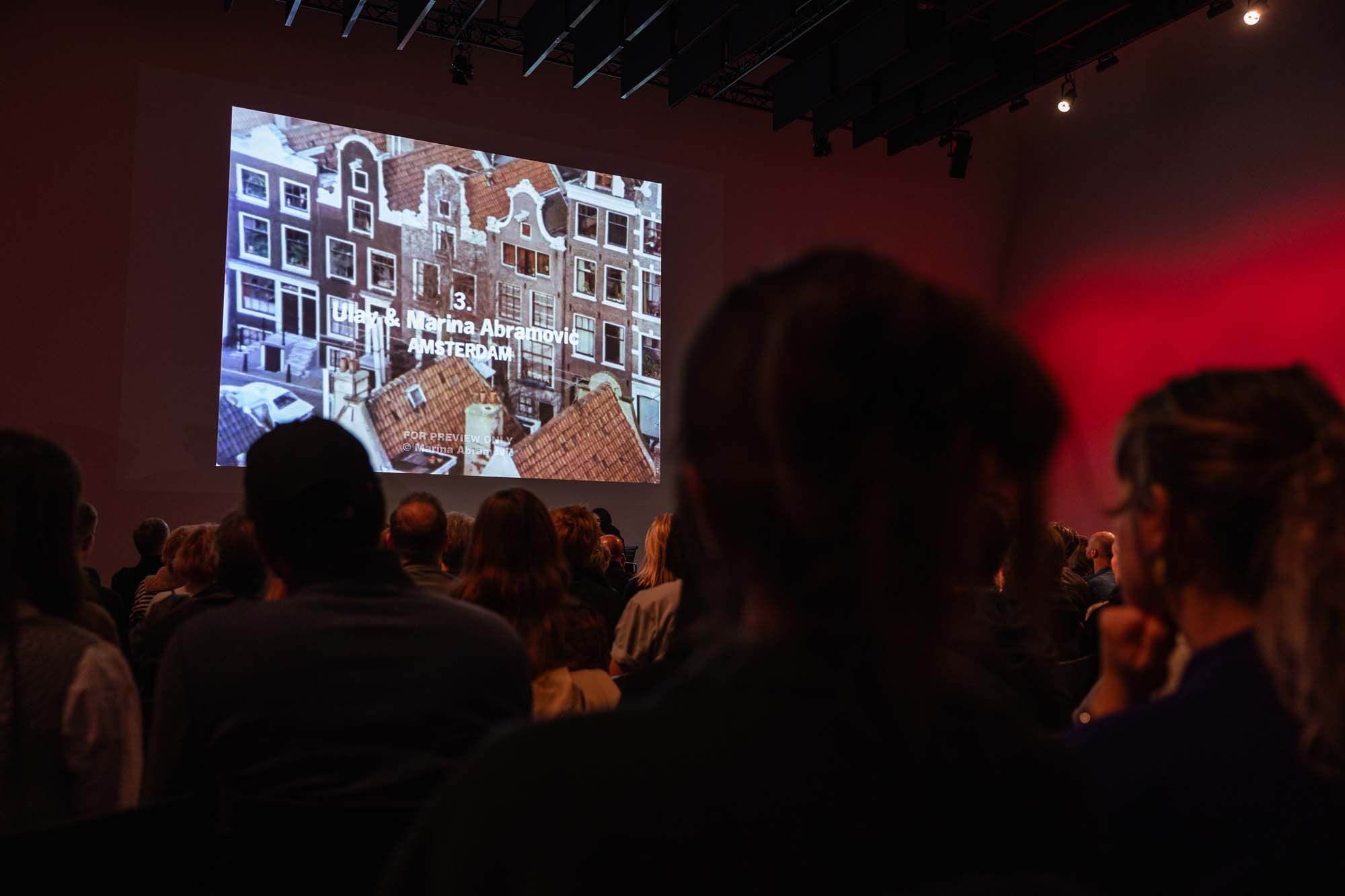Karen Archey: I think your work is so incredibly relatable. Also, you as a person are also incredibly relatable, and those lessons are almost broader than literally living a nomadic life and living in these kinds of in-between spaces, which could also potentially be a mindset. Even though that’s the way you may have performed them or experienced them in the past, what’s so powerful about your work is that everyone can access these feelings and these things.
Marina: To me, it’s very important that everyone, from the person who cleans streets to the president of the country, can understand what I’m doing on any level, and I’m always there to explain it. I mean, this is my belief, which many artists don’t share with me, that artists should be a servant of society, that art is not just without any function. Art was really serving the aristocrats and church and partition and gods. Now, art has to serve people, and the public becomes part of the art more and more.
Karen Archey: What is the role of the audience in your work?
Marina: Everything. It’s really interesting that Martha Graham, the great dancer, said once that every time you see dance, dance. It is a holy ground. I have a different appreciation of this. To me, wherever there’s public, that space becomes sacred, because without the public, there’s no performance. Performance in public creates unity, creates community, and they feed each other with energy. This is absolutely essential. Performance without public means there’s no work.
Karen Archey: This is a question I’ve been dying to ask you for years. I was wondering how you relate to the practices of the 1970s that are more canonized, such as conceptual art and second-wave feminism. You oftentimes say that you don’t ascribe to those systems of thought. Do you consider yourself engaging in events of that period?
Marina: I don’t know. I have said so many times that art doesn’t have gender or sexuality. I don’t care who makes it. I think that art has only two categories: good and bad art. That’s it. I hate anything putting it into these -isms. The moment you have feminism and you have the exhibition of feminist art, then you immediately have the exhibition of male art. This is such a terrible division, which I think art should not have. I was looking into this problem, and I think that I’m starting to see what women have done wrong. It’s not just the fault of men.
In the 1950s in America, there was incredible abstract art being made by fantastic female artists, but only male artists were shown. Why didn’t they show female artists? What was the problem? It was how we create—we put ourselves in the position of fragility and not the position of strength. To me, I feel like a warrior, an Amazon, I can do anything. I can never imagine the whole idea of abuse. I would just kick everybody’s balls, everybody that touches me. I mean, why don’t we use the energy we naturally possess, the strength that enables us to give birth? This is the power that women have. That is unbelievable strength. We have to use that. I never had any of these problems. I never want to be in any kind of category, ever.
Karen Archey: It’s so interesting to hear that, because I remember, for example, in the development of the exhibition, we were looking at various places for the Portal, which weighs something like 600 kilos. At some point, one of the employees said, “But it’s too heavy, so we can’t put it there.” You said, “Well, what do you do with the Richard Serra then?” They responded, “Well, we make a plate for it to spread out the weight.” You said, “Well, do that for me.” And I think that is living feminism.
Marina: You forget something, that an incredibly important part of my life is the sentence: If you say no to me, it is only the beginning.
[audience laughs]
Karen Archey: I recognize that for sure.
Rein Wolfs: That’s where the curatorial part should change and come into action again.
Karen Archey: Well, it’s interesting to hear your thoughts on that, Marina, because I see you as someone who describes herself as feminist, as I do. I see you as a living example of female strength. To me, feminism is just the desire for women to be treated equally as men. That’s it.
Marina: Do we know how we are going to fight all this? I was thinking about Louise Bourgeois, who died at the age of ninety-eight. Not one of these women reached a hundred. So the goal in my life is to go over a hundred. Then you are really respected and nobody will ask you, “Why is this art?”
[audience laughs and claps]
The worst is to have a sick body and old age, but to have really old age and the wisdom of old age, that’s what I love. Now, I would never want to return to being twenty, thirty, or forty, because those years mean a sort of ignorant suffering; you lack understanding. . Now is really good. You really know what you know and you can share this knowledge with the young generation of artists, which is what I do.
Karen Archey: Do you consider yourself a teacher because you have such a strong relationship with so many young people?
Marina: I am very passionate about teaching. I really like teaching, and I have taught for many years, more than twenty-five. What I really like about teaching is, there’s a kind of exchange I give to the young generation of artists. My wisdom of something I have done for fifty-five years, but they give me a sense of time, a sense of the moment we live now. This is so important to me, that I really understand the present. My generation ignores the young people. They always think that their own time is better. I don’t think so. I think the young generation is vibrant, full of energy, has incredible ideas, and I love supporting them. I love seeing them grow and seeing them find their own way. When I teach a lesson, number one is you should never look like me. I only ever wanted to really put the effort into their story. They should come with their own ideas which come from their own life. They have to be authentic and have to be original.




